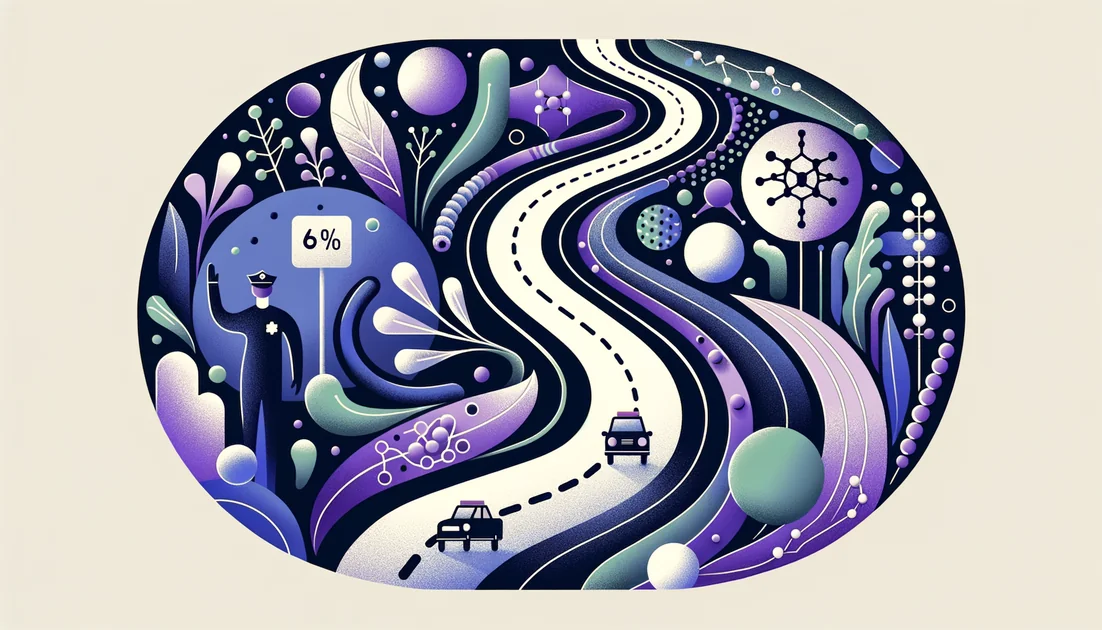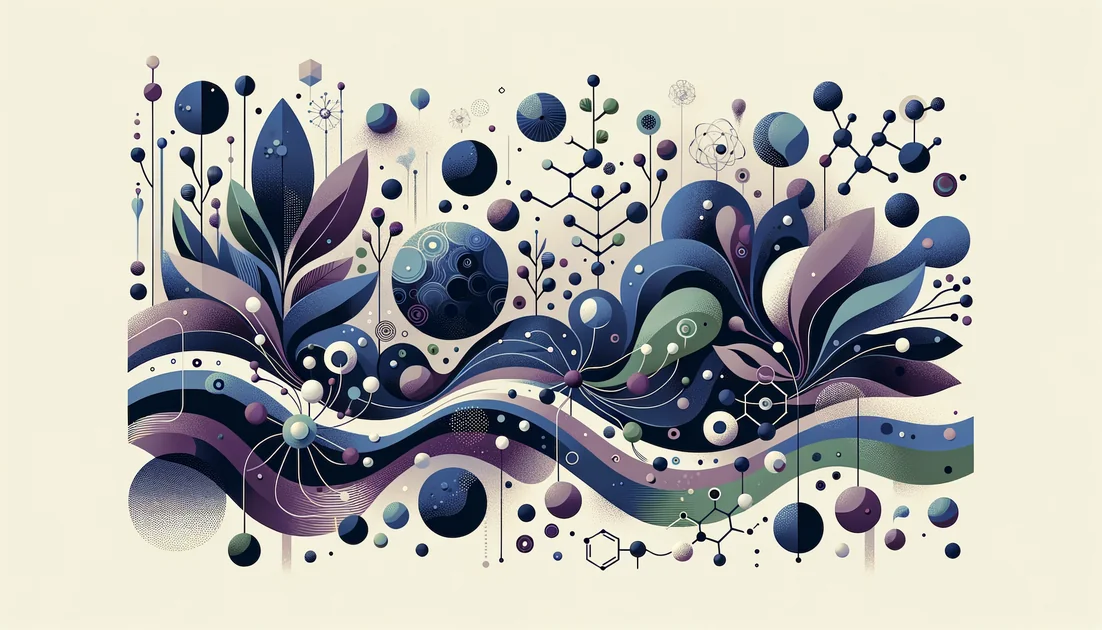
The Vitamin That Tells Calcium Where to Go: From Bleeding Chicks to Breakfast Natto and Aging Arteries
You load up on calcium for strong bones—then your heart scan shows calcium where it doesn't belong. What if a quiet vitamin acts like a traffic cop, waving calcium into bone and away from arteries?
- Evidence
- Promising
- Immediate Effect
- No → 6–12 weeks for vitamin K–dependent protein activation; months to years for arterial stiffness and bone metrics
- Wears Off
- Gradually over weeks after stopping
A vitamin born in a mystery of bleeding chicks
In the 1930s, Danish biochemist Henrik Dam noticed something odd: lab chicks on a fat-depleted diet began to bleed internally. Adding back known vitamins didn't help—until a new factor from greens and liver stopped the hemorrhages. He called it vitamin K, for "koagulation." A year later, Edward Doisy isolated two related compounds, K1 (from plants) and K2 (from animal and fermented sources), and the Nobel committee honored them for solving a life-and-death riddle. As the presentation speech put it, there was "a regular race to solve the riddle of vitamin K."[2][3]
The calcium traffic problem
Fast-forward to today. Many of us worry about bones thinning with age even as scans reveal calcium hardening our arteries. Vitamin K2 enters here—not as a megaphone supplement, but as a signal switch. Your body makes special proteins that steer calcium: osteocalcin, which helps pack calcium into new bone, and matrix Gla protein (MGP), which patrols vessel walls and keeps minerals from crystallizing there. Without vitamin K's "final click"—a tiny chemical tag added to these proteins—they can't do their jobs. As Tufts scientist Sarah Booth explains, "There are certain proteins responsible for keeping calcium away from places we don't want calcium—and these proteins cannot function without vitamin K."[1] Researchers uncovered MGP's role by watching what happens when it's inactive: arteries calcify faster, especially in kidney disease. Blood levels of inactive MGP (dp-ucMGP) track with higher risks of death in several cohorts—like a dashboard light for K-short tissues—even though proving cause and effect remains difficult.[6][7]
From breakfast natto to better bones—and a clue from Japan
If K2 is the traffic cop, where do you find it? One answer sits on a humble Japanese breakfast table: natto, fermented soybeans glossy with strings of sticky proteins. Regions that eat more natto tend to show stronger bones. In a large study of older Japanese men, frequent natto eaters had higher hip bone density, an association largely explained by better vitamin K status.[4] In postmenopausal women followed for 15 years, eating natto at least weekly was linked to fewer osteoporotic fractures, even after accounting for bone density.[5]
Trials that read like plot twists
- The Rotterdam Study first surprised cardiologists: people with higher dietary K2—not K1—had less aortic calcification and lower coronary heart disease mortality. That didn't prove K2 prevents heart attacks, but it put K2 on the cardiovascular map.[8]
- In a three-year, placebo-controlled trial, healthy postmenopausal women taking 180 micrograms of K2 as MK-7 daily showed improved measures of arterial stiffness and a substantial drop in inactive MGP. Think of vessels regaining a touch of youthful spring.[9]
- Then came tougher tests: in chronic kidney disease, where calcification gallops. A year-long randomized trial (K4Kidneys) found that K2 didn't improve pulse-wave velocity, and an 18-month dialysis study saw no slowing of coronary calcium—though both confirmed K2 reduced inactive MGP. The biology responded; the hard plaques didn't budge within the study windows.[10][11] A 2023 meta-analysis echoed the caution: biomarker and elasticity nudges, but no clear change in imaging scores—yet.[12] What to make of this? K2 seems to flip the biochemical switches we expect (protein activation), shows promise in select groups (arterial flexibility, bone markers), and associates with better outcomes in observational research—but the hardest endpoints (calcification scores, events) remain a work in progress.
A molecule with staying power
Part of K2's intrigue is its long hang-time in the blood. In head-to-head studies, the MK-7 form lingered for days—unlike K1, which faded within hours—allowing steadier activation of those calcium-handling proteins. Picture a lighthouse that stays lit through the night, not a flashlight that flickers.[13]
Edges of the map: clinics and cases
Clinicians chasing calcification at the extremes have pushed K therapy into real-world tests. In hemodialysis patients, short courses of MK-7 sharply lowered inactive MGP within weeks.[14] Renal-transplant recipients saw arterial stiffness ease over eight weeks of MK-7 in a small, uncontrolled study.[15] And at least one dialysis patient with devastating calciphylaxis—a painful, often fatal calcification of small vessels—improved with high-dose vitamin K when other options faltered. These are glimmers, not guarantees, but they keep the question alive.[17]
Voices of caution and a practical way forward
Amid the buzz, Booth offers a steadying note: "There are insufficient data to support people taking dietary supplements of any form of vitamin K." Her counsel is to eat well first, especially leafy greens and fermented foods, and to be consistent if you take warfarin because swings in vitamin K can blunt the drug.[16][18] If you do explore K2, most human trials used MK-7 at 90–200 micrograms daily, often 180 micrograms, taken with a meal. Consistency matters more than megadoses, and benefits—when they appear—tend to show up first in lab markers over 6–12 weeks, with structural changes taking months to years.[9][14][13] The one hard stop: anyone on coumarin anticoagulants (e.g., warfarin) must talk with their clinician before changing vitamin K intake.[18]
The cultural echo
There's something poetic about a nutrient discovered through bleeding chicks, rediscovered in a sticky breakfast food, and now tested in the battle against aging arteries. K2 might not be the missing piece for everyone, but it looks a lot like a conductor—bringing bone, vessel, and diet into better rhythm. The story isn't finished, and that's the good part. Science, like calcium, moves where it's directed. Our job is to keep asking better questions—and keep room at the table for a little natto.
Key takeaways
- •Vitamin K2 emerged from a bleeding-chick mystery and later split into K1 and K2; K2 is tied to animal and fermented foods.
- •K2 helps activate proteins that keep calcium out of arteries and in bones—the core of its 'traffic cop' role.
- •Observational data (Rotterdam) links higher dietary K2 with less aortic calcification and lower CHD mortality.
- •An RCT using MK-7 at 180 µg/day for 3 years improved arterial stiffness and lowered inactive MGP in postmenopausal women.
- •In CKD/dialysis, K2 reliably lowers inactive MGP but hasn't yet reduced calcification scores in trials.
- •Practical use: MK-7 90–200 µg/day (often 180 µg) with meals; think slow-and-steady kinetics, and use caution with warfarin.
You might also like
Explore more of our evidence-led investigations, comparisons, and guides across every article style.

Nature Made
Nature Made: Testing powerhouse with mid-tier transparency and occasional quality stumbles

Alpha-GPC (choline alphoscerate) vs CDP-Choline (Citicoline)
For daily focus and memory, pick Citicoline (250–500 mg/day). For a one-off workout power boost, Alpha-GPC (≈600 mg pre-session) has limited acute data—but weigh a cohort signal of higher long-term stroke risk if used chronically, especially in older adults.


Berberine
In 868 CE, the world's oldest printed book—the Diamond Sutra—was dyed a luminous yellow. Chemists later confirmed the color came from berberine, an intensely bitter plant alkaloid that clings to paper fibers and wool with stubborn devotion. Today, that same bitterness is drawing attention for a different reason: it seems to whisper to our metabolism through the gut. How did a monk's dye become a modern health obsession?[1][2]

Calm Focus Unlocked: Kill The Jitters
Real but modest, short-term benefits with a "gas pedal + steering" effect; best for focused tasks, not all-day stimulation.

Tocotrienols
The stealthier cousins of vitamin E—built with springy tails that move differently in cell membranes and behave differently in your body.
